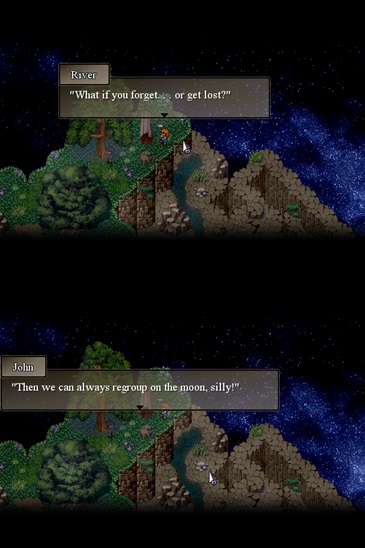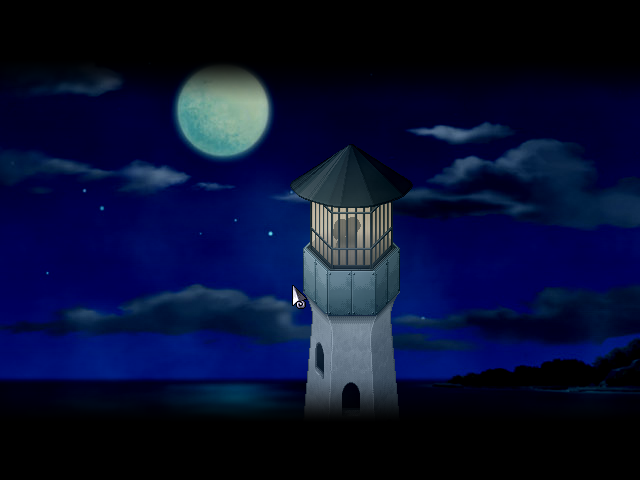Befriending Lighthouses
They Shine Their Lights on Other Lighthouses… and at Me
Somewhere in the near future, the technology to travel through – and even alter – the human memory has been achieved. However, the side-effect is that it disturbs the normal functions of an active human brain, yielding possible damages to the patient. Despite this limit, nevertheless, the Sigmund Agency of Life Generation (SALG) was still able to utilize this technology’s promising potential, and is now using it to fulfill the unaccomplished dreams and desires of people who are currently on their death bed…That is, by altering their patients’ memory in such a manner where these patients will be made to believe that they have reached their desired conclusion, therefore giving them a chance to die with a contented heart. To be able to do this, SALG representatives must first know the reason for each patient’s dream or desire, and to do that, they must journey through the different parts of the patient’s life, and connect these reasons and motivations, strengthening them in order to achieve the desired conclusion.
This is the main premise of the indie game ‘To the Moon’ (TTM) by Kan Gao.
Enter your counterparts in this game, Dr. Eva Rosalene and Dr. Neil Watts, SALG representatives assigned to the patient Johnny, a widower who currently lives with his caretaker, Lily, and Lily’s children, Sarah and Tommy, in a house near the edge of a cliff.
Johnny’s desire is very simple: he wants to go to the moon, and while he is very keen and firm on this desire, his reasons and motivations which support it remain unclear. Because of this, both Eva and Neil must go backwards through different points in Johnny’s memory timeline to look for clues and string them all together, hoping the memory fragments they find would suffice. As you dig a little deeper into Johnny’s subconscious, you, along with Eva and Neil, begin to discover more about Johnny and his rather peculiarly-formed dream, and also about River, Johnny’s deceased wife, and how she actually becomes an important key to unlocking all the mysteries that surround him, all before you lose Johnny for good.
(Re)Playing the Game
At first glance, TTM didn’t seem like one of those promising games you’d expect to be flying off the shelves had it not been an indie game. With its almost entirely pixelated graphics and relatively easy gameplay (the game requires only a mouse as your control for the most part of the game, and what you do is basically move around and interact), the game doesn’t really separate itself from other indie RPGs out there
Frankly, TTM felt more like a movie you can interact with than a real game. You just go along with whatever the characters ask you to do, and for the most part, you just read the dialogue (fair warning to all: this game is text-heavy). While there are moments where they allow a little decision-making, it doesn’t really alter anything major in either the state of your characters or the progression of the story; it just induces various comical reactions from the two quirky characters you are controlling. The only real thrill TTM can give with respect to its “game qualities” are the mini-games it provides, such as the rather complicated puzzle you need to solve in order to reach the next level and other challenges you need to accomplish to gain mementos (these are your “qualifiers”; you can’t play the main mini-game and reach the next level without them).
Everything’s Alright
The overall feel of the game is calm and relaxing, and the music plays a big part in generating that atmosphere. It uses a lot of classical music as its background, including sounds from the piano (explicitly shown to be played by either Johnny, or Lily’s children, Tommy and Sarah), and even a music box, with the addition of realistic noises such as the sound of the sea, human footsteps, and even human heartbeats.
As an added bonus, the game also has its own soundtrack, which includes an original composition written and performed by Laura Shigihara, entitled “Everything’s Alright”, obviously intended to tug at the heartstrings of those playing the game.
Pixels, Skies, and a Whole Lot of Greenery
Graphics may be where the game needs a little more improvement. The characters alone are simply pixelated sprites that only show feelings and reactions through minimal facial expression and physical movements. Sometimes, their movements, and even their posture can be a little awkward to look at.
However, I would like to give credits to the designer of the background, especially the landscape. It is apparent that much effort was given to that part of the game. There are also parts of the game where the design style temporarily changes to almost anime-like art, as if they were your usual cut scenes.
We Can Always Regroup in the Moon
To conclude this review, I would like to quote River: “It’s like those lights in the sky… They all look the same from here, but that doesn’t make them any less pretty.” (To the Moon, Act 3)
As someone who plays something only every other time, I am very open to the possibility of the existence of other games that might be just like TTM, or maybe even better, with respect to other components. But that doesn’t make TTM any less remarkable than it really is.What it lacks in graphics and gameplay, it gives back with plot and music—the perfect combination for a feels-worthy, plot-centered kind of game.
If you’re the kind who’s looking for a reason to feel (and I mean, really feel), then this game is definitely for you!
Rating: 3 ½ Stars (or Lighthouses… Those who played will understand)
Strengths: PLOT <3, Impressive background and landscape design, Mini-games
Needs Improvement: Character Design, Gamer interaction, Character Movements
Time needed to Finish the Game: Five hours max (no breaks)
Me Before the Game: I bet I’ll cry as soon as I’m through with this.
Me After the Game: I was so right.













Comments